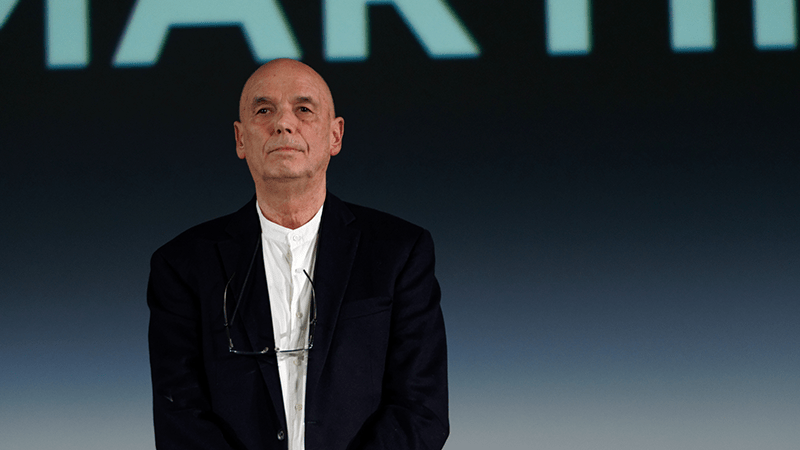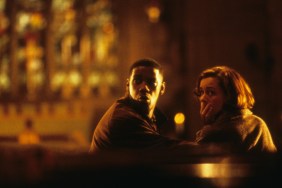ComingSoon’s Jeff Ames was able to speak with acclaimed director Martin Campbell about his new action-thriller, Memory. The film, which releases this week in theaters, stars Liam Neeson, Guy Pearce, Monica Bellucci, and Ray Stevenson.
“When Alex, an expert assassin, refuses to complete a job for a dangerous criminal organization, he becomes a target. FBI agents and Mexican intelligence are brought in to investigate the trail of bodies, leading them closer to Alex,” says the official synopsis. “With the crime syndicate and FBI in hot pursuit, Alex has the skills to stay ahead, except for one thing: he is struggling with severe memory loss, affecting his every move. Alex must question his every action and whom he can ultimately trust.”
Jeff Ames: What was it about this project that attracted you to it?
Martin Campbell: Well, there was actually a Belgian film that was shot in 2003. A few years ago, I happened to see the DVD and I thought it was terrific. I thought it could adapt to America, to the U.S./Mexico border. It was a perfect project for that. I managed to get the rights and get a script written and get Liam Neeson, who said yes. Based on his name, of course, we got the money for the film. That’s the history of it.
How tricky is it to make a character like Alex Lewis — who is, by all accounts, a very bad man — appealing to audiences? He does traverse some tricky moral territory.
That’s a very good point. First, you hire Liam Neeson. That’s the first thing you do. Like Tom Hanks, he has a lot of empathy. He just has a relationship with the camera that makes you like him, much like Tom Hanks. How could you not like these guys? And you’re right, his profession is pretty horrible. He’s a hitman. He kills people for money, and he doesn’t ask questions about who he’s killing until our movie where he’s asked to kill a 13-year-old girl — he refuses to do it.
Essentially, when he chooses to team up with Guy Pearce to see justice done, you like him. Very early on, you’re kind of on his side. Even when he’s dealing with his brother, which is a very nice scene between the two characters — Alex goes to the home and his brother has Alzheimer’s — he’s looking at himself, basically. It’s a mirror. He’s seeing himself. That’s where he’s going to end up. All of those elements go to helping you like the guy, despite a profession that is pretty horrible.
RELATED: Memory Interview: Liam Neeson Discusses Latest Action Film
In that same vein, the film deals with some pretty heavy subject matter — sex trafficking, you mentioned the U.S./Mexico border. How do you spin all of that into an enthralling narrative, because ultimately people have to watch the movie, right?
I’m not quite sure. All I can say is just be honest with the script. We have a good script from Dario Scardapane, who did a lot of episodes of The Bridge. So, he understood the border issues and how to strike that balance with all the dark subject matter. You’re right, it’s a tricky balance. I guess what happens is you get actors like Liam and Guy Pearce and Monica Bellucci.
I also do a lot of preparation on movies, certainly with the script and tracking the story. Tracking the arc of the Alzheimer’s progression in Liam’s character and so forth. I just hope the mixture and balance of the movie works out well.
Well, you certainly strike a perfect tone. This is a dark film, but also a pretty awesome action thriller with Liam Neeson. Speaking of which, having directed a number of action scenes over the years, do you find it more difficult to come up with new ways to create awesome action, or is it just something you can do in your sleep at this point?
You can never do it in your sleep. You have to keep the action in keeping with the character. Action for action’s sake is boring, no question. You have to balance the action. For example, in a movie called The Foreigner with Jackie Chan, I absolutely refused to let him do his usual style — you know pulling out the tablecloth, or fighting with a ladder, all of which he does brilliantly. But because the character was military-based, the action had to be very different to what he normally does. The same goes for Memory. It’s all character-related.
With Liam, because he’s 68 — and that’s what he is in the movie, there’s no question he’s getting to the end of his career. He even tells his boss at one point that he wants out. And his boss tells him, “There’s no getting out for people like us. You’ll end up with a bullet to the head.” The characters and relationships are what intrigue me in the story.
How much of your work is improvised on the spot? Was there a moment in Memory where you threw something in at the last second that ended up enhancing a scene?
There are always moments you can throw in — happy accidents are what we call them. Somebody trips over a chair or whatever it may be. But I did a lot of work with Guy Pearce. We went through the script, changed lines and broke the scenes down and asked if there was a better way to do this, or a better way to tell the story.
For example, a scene where Harold comes in and Guy’s playing billiards. He’s been ordered back by the boss. He has to go back to Mexico, and he refuses. He’s got to stay here. That whole scene was originally written outside of Guy’s apartment and the dialogue was completely different. We reworked it and Guy is very good at coming up with ideas based on what the scene is about. We reworked the dialogue. It’s an entirely different scene than what was written. That’s the kind of thing that we do. It’s saying the same thing that was originally intended in the script, but it’s just improving upon the original. Once the characters are set, they kind of dictate the way the scene is played.
One of the interesting elements of the film is that the good guys are forced to obey the rules while Alex can dish out swift justice. In that regard, do you consider him the hero of the story?
Not really, no. It’s true there’s always a Mexican liaison guy, for obvious reasons — they’re on the border. And they’re obviously dealing with a lot of Mexicans. So, that’s a fact, that’s the way these things work. Harold’s character, rather like Guy’s, they’re all sort of attuned to the corrupt system that lets these people — these wealthy white people — get away this sort of thing. And of course, both Harold and Vincent, that’s Guy Pearce, they have obviously had tragedy in their lives which governs the outcome of how they deal with the ultimate end of this story, which is very different from the original by the way. Really, it comes from two honest cops dealing in a corrupt system that have decided to draw a line in the sand. All of those themes are really interesting.
RELATED: Interview: Director Martin Campbell Discusses The Protégé
You’ve mentioned the superb cast, so how did this amazing ensemble come together?
Well, Liam got the film set up. Once you get Liam, you get your film set up, basically. He loved the part; I think because it was something different for him. It had a little more nuance and depth perhaps than he had done in the past for a little while. He was very attracted to playing a bad guy. Liam is the ticket to getting a load of other great actors, which is what we did.
What made you cast these actors for these specific roles?
Well, I’ve always admired Guy Pearce. He never put a foot wrong, no matter what the movie. He’s terrific. And Monica makes that part way more interesting than perhaps what was written, if you see what I mean? And Ray Stevenson is all cop, who also has his different loyalties. There’s a big separation between the FBI and the local police. There’s a sort of turf war between them, which, by the way, was in the original film. Different police force than what it is in America, but that conflict was there in the original film. I think we developed it a little more than the original film and did a good job.










